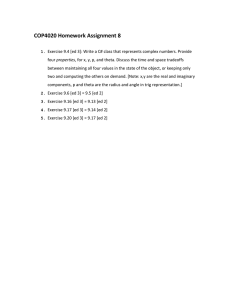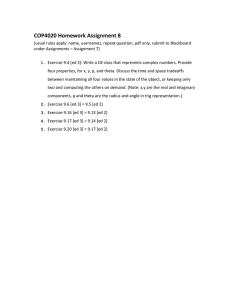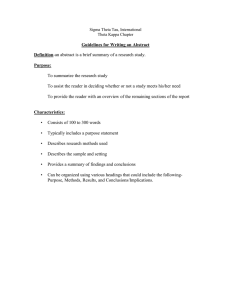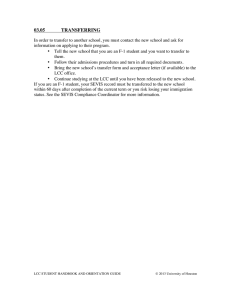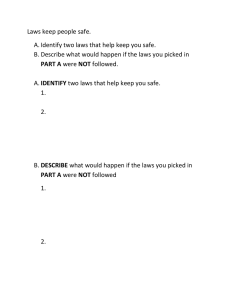advertisement
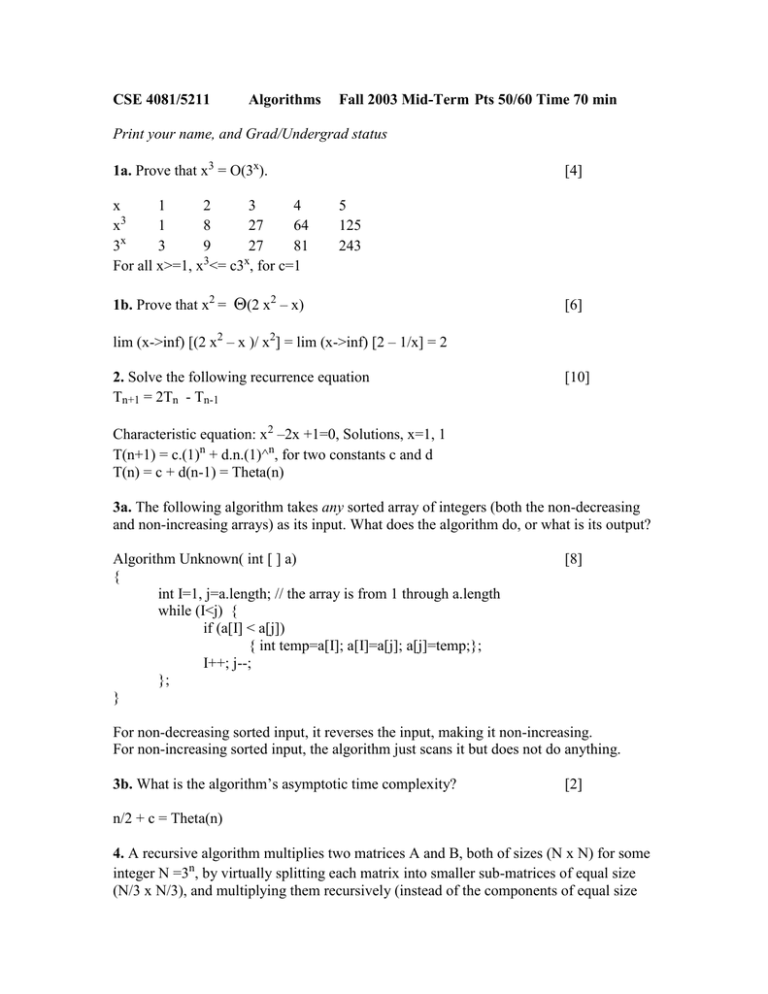
CSE 4081/5211
Algorithms
Fall 2003 Mid-Term Pts 50/60 Time 70 min
Print your name, and Grad/Undergrad status
1a. Prove that x3 = O(3x).
x
1
2
3
4
3
x
1
8
27
64
x
3
3
9
27
81
3
x
For all x>=1, x <= c3 , for c=1
[4]
5
125
243
1b. Prove that x2 = (2 x2 – x)
[6]
lim (x->inf) [(2 x2 – x )/ x2] = lim (x->inf) [2 – 1/x] = 2
2. Solve the following recurrence equation
Tn+1 = 2Tn - Tn-1
[10]
Characteristic equation: x2 –2x +1=0, Solutions, x=1, 1
T(n+1) = c.(1)n + d.n.(1)^n, for two constants c and d
T(n) = c + d(n-1) = Theta(n)
3a. The following algorithm takes any sorted array of integers (both the non-decreasing
and non-increasing arrays) as its input. What does the algorithm do, or what is its output?
Algorithm Unknown( int [ ] a)
{
int I=1, j=a.length; // the array is from 1 through a.length
while (I<j) {
if (a[I] < a[j])
{ int temp=a[I]; a[I]=a[j]; a[j]=temp;};
I++; j--;
};
}
[8]
For non-decreasing sorted input, it reverses the input, making it non-increasing.
For non-increasing sorted input, the algorithm just scans it but does not do anything.
3b. What is the algorithm’s asymptotic time complexity?
[2]
n/2 + c = Theta(n)
4. A recursive algorithm multiplies two matrices A and B, both of sizes (N x N) for some
integer N =3n, by virtually splitting each matrix into smaller sub-matrices of equal size
(N/3 x N/3), and multiplying them recursively (instead of the components of equal size
(N/2 x N/2), as in the algorithm on page 382-364). Set up a recurrence equation for this
algorithm and solve it. The following is a view of the split for the multiplication R = A X
B. Usual formula holds, R ij = k Aik X Bkj, where X stands for matrix multiplication,
and for matrix addition over the three values of k, except when i=j, where X is only
integer-multiplication and no further splitting is required.
[4+6]
| R11 | R12 | R13 |
| A11 | A12 | A13 |
| B11 | B12 | B13 |
| R21 | R22 | R23 | = | A21 | A22 | A23 | X | B21 | B22 | B23 |
| R31 | R32 | R33 |
| A31 | A32 | A33 |
| B31 | B32 | B33 |,
each element being a sub-matrix of smaller size.
T(n) = 27T(n/3) + O(n2). So, a=27, b=3, k=2 in the Master’s theorem
Case of a<b^k: T(n)= Theta(N^log-base-b(a)) = Theta(N3)
5. Use Dijkstra’s algorithm for finding the longest paths from the node v1 to each other
node on the following directed and weighted graph. It is an adjacency-list representation
of the graph.
[10]
v1: (v2, -2), (v5, -1)
v2: (v4, -10), (v5, -3)
v3: (v1, -4), (v4, -1)
v5: (v3, -8), (v4, -4)
All negative nodes, algorithm works like finding shortest path on the absolute values of
arcs.
picked up v1: (v2, -2(v1)), (v5, -1(v1))
picked up v5: (v3, -9(v5)), (v4, -5(v5))
picked up v2: (v4, -5(v5)), (v5, -1(v1))
picked up v4: nothing
stops.
Additional question only for graduate students:
[10]
6. A strongly connected component (SCC) of a directed graph is where forward and
reverse paths exist between any pair of nodes within each SCC. A loosely connected
component (LCC) is where between any pair of nodes within the component there exists
either a forward path, OR a reverse path, or a common ancestor node, or a common
descendant node. Suggest how the SCC-algorithm may be modified for finding such a
LCC.
Disconnected LCC’s have no arc across the components.
Make the graph undirected, then run Depth First Search. Each DFS tree is a LCC.
